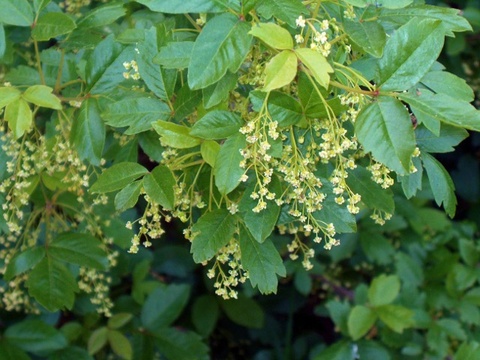Most of us are aware of poison ivy, which induces intense rashes by getting in touch with the human skin. But another relative of it causes an equal amount of damage called poison oak.
These plants are also native to northern America and are known to turn outings into a living nightmare with their toxic traits. Appearance-wise, they look ordinary; thus, it becomes difficult for people to recognize them and stay away.
One of the most asked questions about it is, does poison oak have flowers? We will answer that in this article, along with the details of the various physical aspects of poison oak.
Does poison oak have flowers?

Yes, poison oak does have flowers—beautiful looking ones that will not let you assume the deadly nature of the plant. These flowers come in two colors, white and greenish yellow.
How to identify poison oak?
Identifying poison oak can be very difficult as it has a similar appearance to poison ivy. But it’s essential to know how they look. That way, many will be able to avoid coming in contact with it and reduce the chance of getting an infection.
1) Location
There are two distinct species of poison oak Atlantic poison oak and Pacific poison oak. The Atlantic species is native to the southeastern USA, and the Pacific poison oak is found in the western parts of America.
It can grow as a vine, or you can also find it as a shrub.
2) Structure of the Leaves
Poison oak mainly appears in a set of three leaflets arising from a single stem. The two outer leaflets stay connected directly to the branch while the middle one grows straight, forming a triangle shape.
The leaves look almost identical to poison ivy but have smoother edges and resemble oak leaves. It can also have a silkier surface and a red tinge on it.
3) Shiny Leaves
There is a high chance of poison oak leaves appearing very shiny due to the presence of urushiol. But even if they do not look shiny, they still have the oil on them.
4) Red-colored leaves
Depending on the season, poison oak leaves might turn red during autumn.
5) Berries and flowers
Poison oak produces a cluster of white or greenish yellowish berries along with white and sometimes greenish-white flowers, which can grow up to 1/4 inch in size.
6) Poison Oak Imitates
Poison oak becomes harder to identify as they can imitate the appearance of other plants surrounding them. So it is crucial to remember that not all poison oak leaves look similar.
Must Remember
There is a motto to recognize poison ivies and poison oaks because of their three leaflet structures. “Leaves of three, let it be.”
Wrapping It Up
Poison Oaks are better left alone. So try to be cautious whenever venturing on a hike or a bike ride. Even if you encounter them, wash away your clothes as soon as possible so that your skin does not come in contact with urushiol.
Featured Img Src: Elf at English Wikipedia, CC BY-SA 3.0, via Wikimedia Commons
